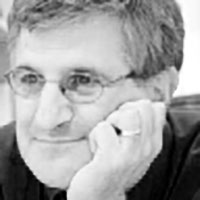On January 16, 2016, Gina Kolata and Sarah Cohen, writing for the New York Times, offered up some grim news: “The rising death rates for young white adults make them the first generation since the Vietnam War years of the mid-1960s to experience higher death rates in early adulthood than the generation that preceded it.” The reason: opioid addiction. The biggest culprit: doctors. By refusing to accept their inability to separate pain relief from addiction, physicians have long suffered the sin of hubris—and their patients have paid the price.
It started with humankind’s first medicine.
About 6,000 years ago, the Sumerians discovered opium. One of the first clinicians to recommend it was Hippocrates, the Father of Modern Medicine, who used opium to treat nausea. But it was an unknown contemporary of Hippocrates named Diagoras of Melos who first noticed that many of his fellow Greeks had become addicted to the drug. Diagoras’s warnings were ignored.
Opium users became opium addicts.
In 1803, Frederich Sertürner, a 20-year-old German chemist, purified opium’s most active and most abundant ingredient. He called it morphium after the Greek God of Dreams. Sertürner hoped that by purifying opium’s main ingredient, he could separate pain relief from addiction. While conducting his studies, Sertürner became addicted to the drug. Like Diagoras of Melos, he warned against its use. Again, no one listened. In 1827, the German pharmaceutical company Merck began mass-producing Sertürner’s drug.
Opium addicts became morphine addicts.
In 1874, C.R. Alder Wright chemically modified morphine to produce diacetylmorphine. He fed it to his dog, which became violently ill and frighteningly hyperactive. Wright published his findings in an obscure scientific journal. For 20 years, no one noticed the powerful drug that Wright had created.
In 1895, Heinrich Dreser, a chemist working for a pharmaceutical company in the Rhineland named Bayer, discovered Wright’s paper. Dreser found that diacetylmorphine entered the brain five times more efficiently than morphine. He reasoned that because lesser quantities of this drug could relieve pain, it would be less addictive. He tested diacetylmorphine on a few workmen in his company and a handful of local patients. After four weeks of observation, no one appeared to be addicted—at last, a non-addictive, potent painkiller. Bayer named the drug for its heroic properties.
Morphine addicts became heroin addicts.
In the early 1900s, German researchers chemically modified thebaine, another component of opium. They called it oxycodone. In the early 1950s, oxycodone entered the United States. The most potent, most addictive, and most deadly preparation of oxycodone was OxyContin, which was manufactured by Purdue Pharmaceuticals and licensed in 1995. Purdue later hoped to reduce the number of daily doses by offering a time-released preparation. However, by chewing the product, users could bypass the time-released mechanism and ingest as much as 160 milligrams of oxycodone at one time, a potentially lethal dose.
Although many doctors had learned to fear opioids, two events liberalized their use in the United States. (Products derived directly from the opium poppy are called opiates; morphine is an opiate. Chemical modifications of opiates are called opioids; heroin and oxycodone are opioids.)
In 1967, Cicely Saunders, a nurse working at St. Luke’s Hospital for the Dying in East London, founded the hospice movement. Saunders believed that terminally ill patients shouldn’t have to spend their last few days crying out in pain. To avoid this suffering, she offered large quantities of painkillers. Saunders’ ideas crossed the ocean. In 1984, the United States Congress passed the Compassionate Pain Relief Act, making it legal to treat terminally ill patients with heroin.
In 1985, Russell Portenoy, a New York City pain specialist, argued that our compassion for people in pain shouldn’t be limited to those with terminal illnesses. No one should be allowed to suffer. He believed that American physicians needed to get over their fear of painkillers, what he called their “opiophobia.” Portenoy insisted that, if used correctly, opioids wouldn’t cause addiction. Under Russell Portenoy’s influence, pain became the fifth vital sign (in addition to heart rate, temperature, blood pressure, and respiratory rate).
Heroin addicts became opioid addicts.
During the past year, doctors, public health officials, and lawmakers have finally taken steps to stem the tide of America’s growing opioid crisis.
On March 15, 2016, the Centers for Disease Control and Prevention (CDC) issued a series of restrictive guidelines. The CDC recommended that doctors should prescribe opioids: 1) only after non-prescription painkillers and physical therapies have failed; 2) in quantities not to exceed a three-day supply for short-term pain or a seven-day supply for chronic pain (for which patients have typically been given a one-month supply with refills); and 3) only when improvement is significant.
On June 16, 2016, at its annual meeting in Chicago, the American Medical Association (AMA) urged physicians to eliminate pain as the fifth vital sign. “We have taken ownership of [the problem],” said AMA president Andrew Gurman. “And physicians have taken ownership of being part of the solution.”
On January 1, 2017, lawmakers for the Commonwealth of Pennsylvania took the CDC’s guidelines one step further—turning its recommendations into law. Unless treating patients with cancer or in palliative care, physicians working in hospital emergency departments, urgent care centers, or in-patient units in Pennsylvania were not allowed to prescribe opioids in excess of a seven-day day supply nor allowed to prescribe refills. Further, when prescribing opioids to minors, physicians were required to counsel the patient or parents about the risks of addiction and obtain written consent, unless the situation was a medical emergency.
In his book, 1984, George Orwell wrote, “Of pain you could wish only one thing: that it should stop. Nothing in the world is so bad as physical pain. In the face of pain there are no heroes.” In the face of a powerful addiction, there are also no heroes.
Today, the United States, which contains 5 percent of the world’s population, uses 80 percent of the world’s painkillers.






